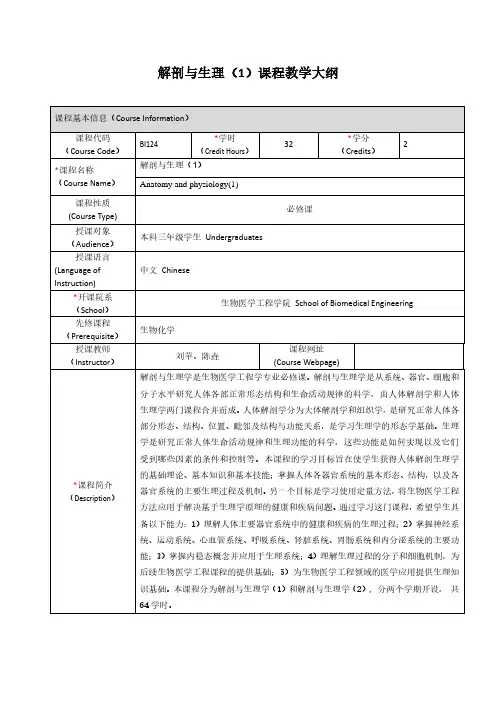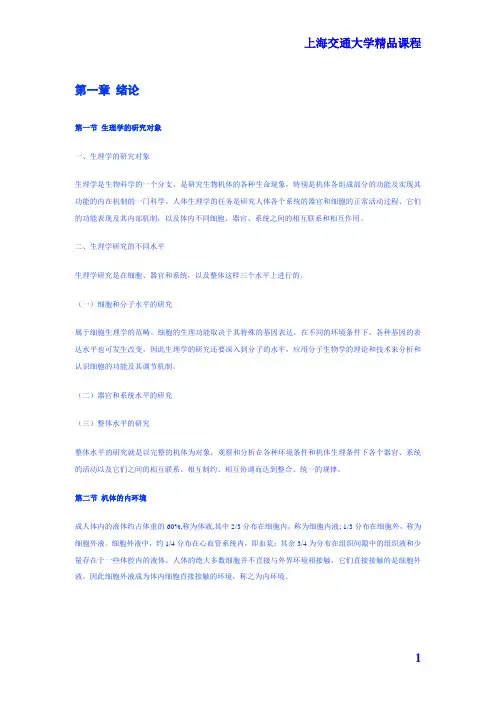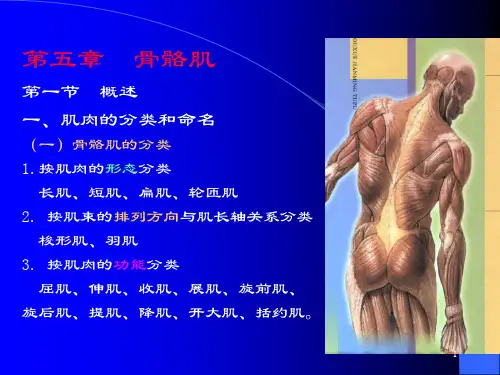解剖与生理(1)课程教学大纲
课程基本信息(Course Information) 课程代码 (Course Code) *课程名称 (Course Name) 课程性质 (Course Type) 授课对象 (Audience) 授课语言 (Language of Instruction) *开课院系 (School) 先修课程 (Prerequisite) 授课教师 (Instructor) 生物化学 刘苹、陈垚 课程网址 (Course Webpage) 本科三年级学生 Undergraduates BI124 *学时 (Credit Hours) 32 *学分 (Credits) 2
*课程简介 (Description)
Anatomy and physiology is a compulsory course for biomedical engineering. This course is the science of studying the normal form and life activity of human body from the system, organ, cell and molecule level, combined with human anatomy and physiology. The anatomy of the human body is divided into general anatomy and histology, which is the relationship between the morphology, structure, location, and structure and function of the normal human body, and is the morphological basis of the study of physiology. Physiology is the science of studying the law of normal human life activity and physiological function, how these functions are realized and what factors they are subjected to. The course enables students to obtain human anatomy and physiology of basic theory, basic knowledge and basic skills; master the basic form and structure of each organ system, and each organ system mainly physiological process and its mechanism. The goal of this course is to provide the basics of human physiology --that is, the mechanisms by which the organ systems of the human body function, with a unique emphasis on the quantitative aspects of the human systems. Another goal of this course is to provide quantitative ways in which biomedical engineering and cell biology are being used to address problems of health and disease based on the principles of physiology. Following completion of this course students will be able to: 1) Provide knowledge base and understanding of the physiological processes underlying health and disease in the major organ systems of the body. 2) Summarize the major functions of the nervous system, muscular system, cardiovascular system, respiratory system, renal system, gastrointestinal system, and endocrine system. 3) Describe the concept of homeostasis as it applies to physiological systems. 4) Provide knowledge base and understanding of the molecular and cellular mechanisms of physiological processes, in order to provide a foundation for understanding biomedical engineering in subsequent courses. 5) Provide sound basis in physiological principles and knowledge in the application of biomedical engineering fields. This course is divided Anatomy and physiology I and Anatomy and physiology II into two terms, total 64 physiology(1) 必修课





